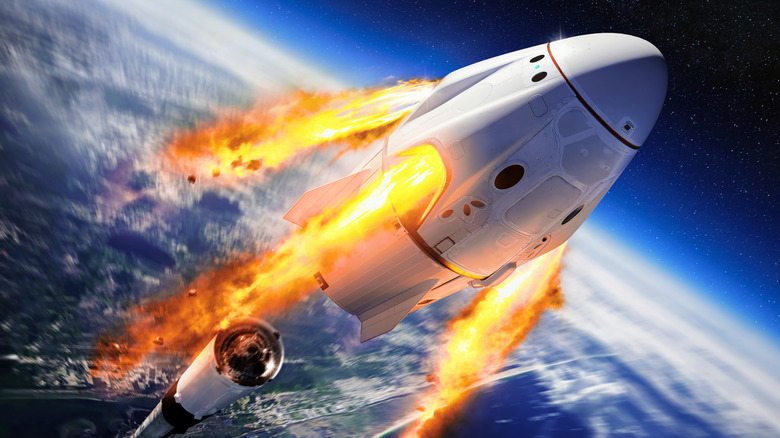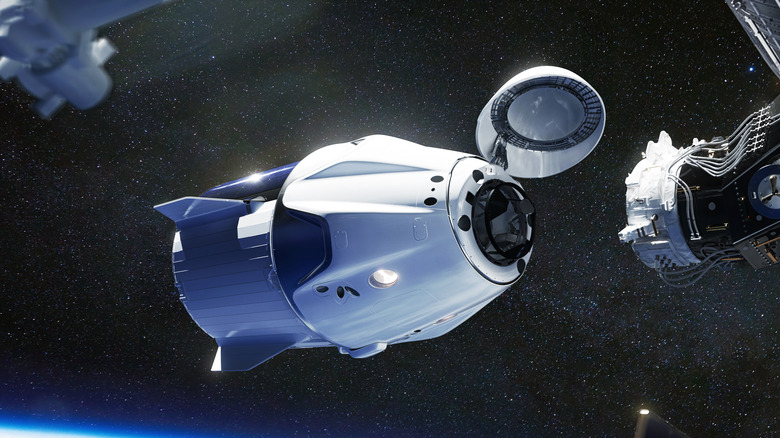Why Is Commercial Space Travel So Expensive?
If you want to fly to space, there are a couple of ways to go if your pockets are well lined. The historical way up — used by the first space tourists — is through Russia's space agency Roscomos, riding a Soyuz rocket for about $20 million per ticket. This was how the U.S. millionaire Dennis Tito became the first tourist in space; he traveled to the International Space Station in 2001, as reported by CNN. Several followed his lead, including the South African millionaire Mark Shuttleworth in 2002, known for his work with the Linux-based Ubuntu OS (via Tribune), and Anousheh Ansari in 2006, the first woman to fly as a space tourist (via Space Legal Issues).
With the rise of private participation in the sector, space tourism kicked off in a major way in 2021. Blue Origin, Virgin Galactic, and SpaceX led the charge with cheaper — but still very expensive — rides. These rates are still so high that only Virgin Galactic has been open about its price for a seat to space, leaving private travel only for the world's wealthiest people...for now, at least. Globe Trender reported in August 2021 that Virgin Galactic increased its prices from $250,000 to $450,000.
Blue Origin and SpaceX seat prices are more mysterious, but unlike Virgin Galactic, which takes tourists to space on a rocket plane, the companies ride them out on top of rockets. Inverse reports that a SpaceX Dragon Crew ride costs as much as $55 million.
What drives space flights costs up?
BBC Science Focus gives a short and straightforward answer on why space tourism is so expensive, stating that chemical-based propulsion is the biggest factor behind these rates. The Tsiolkovsky rocket equation states that the amount of rocket fuel needed to put something in orbit is 10 to 25 times its mass. The equation is so brutal that NASA calls it the "Tyranny of the Rocket Equation." The more weight and mass added to a spacecraft, the more fuel it needs, and therefore the heavier it gets; this creates an incremental cycle driving costs up.
Scientific American explains that rocket fuels can be solid, liquid, or gas. SpaceX reveals that it uses liquid oxygen and rocket-grade kerosene RP-1 propellant to power the Merlin engines that boost a Falcon 9 into space. But even these fuel costs don't amount to a significant fraction of what it costs to build a rocket. Reusable rockets do bring down costs, but they are not 100% reusable. Additionally, carrying a crew requires capsules that are also expensive to build. Launching, training, workforces, and the operations of a mission are also costs that ultimately affect the price of a ticket to space.
There are other issues that affect costs in the space industry. On March 23, 2022, CNBC reported that SpaceX had raised the price of all its launches due to all-time high fuel prices and inflation. The cost for a Falcon 9 launch was set at $67 million, and the Falcon Heavy mission was at $97 million. Small satellites launched under the rideshare program also saw increases, with prices rising to $1.1 million for payloads of 200 kilograms and additional costs of $5,500 per kilo. In conclusion, the rocket equation, cost of fuels, cost of construction and operations, and issues like inflation are why space tourism tickets are so expensive.

